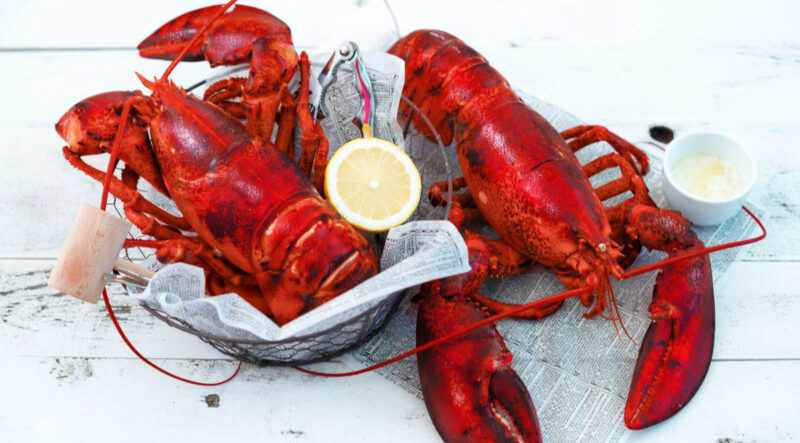Lobster industry clawing back from COVID-19 pandemic hits
Government bailouts for the lobster industry have been controversial among both politicians and consumers
By Kevin Fagan
SeaWestNews
According to a newly released report by the National Fisheries Institute, the US and Canadian lobster industries generated $7.9 billion in revenue in 2022 after COVID-19. This represents a 7% increase from the US$7.3 billion generated in 2021, which was the last year before COVID-19 hit the industry.
Although the lobster industry has finally set foot in its recovery phase, COVID-19 did impact the lobster industry and caused a massive decline in production from 2019 to 2020. The price hike was seen for all sorts of seafood especially people’s all-time favorite—the Maine Lobster.
Since the outbreak, lobster fishermen have seen their income drop by an average of 19%-45% or more. This is due to various factors: increased demand and competition from other fishermen, who are struggling with similar issues; decreased supply of lobsters because of the virus; and increased government regulations on catching and selling lobsters.
On top of this, seafood restaurants have reported finding it difficult to keep up with customer demand for lobsters, due to a shortage of available supply. The result is that prices for live lobsters have gone up by about 40% since the outbreak started in May 2019 i.e., from US$4/lb to US$7/lb. This has made it even more difficult for lobster fishermen to make ends meet financially as fewer restaurants are willing to buy lobsters at such a high rate.
Before the outbreak, there was a large demand for lobsters, but due to their high price point, many consumers could not afford them.
The lobster industry responded to this by increasing production and lowering prices. This caused an increase in demand for lobster products that led to a decrease in supply.
As soon as COVID-19 was officially declared a pandemic, many restaurants stopped serving live lobster because there was a fear that it could be contaminated with bacteria or viruses. Additionally, people were afraid that they would contract a disease if they ate raw seafood such as oysters or clams which are also on the menu at some restaurants.
However, by this time it was too late—the demand for lobsters had already decreased significantly because people were afraid of getting sick from eating them.
Also, the virus killed millions of lobsters in Maine, affecting their growth and reproduction rates. The decrease in supply caused prices to rise dramatically especially after restaurants stopped serving live lobster. It resulted in even fewer people buying from local fishermen because they couldn’t afford them anymore either—this cycle continued until it reached its current equilibrium where most restaurants still don’t serve live lobsters.
During this time of struggle, the government offered several bailouts that allowed fishermen to continue operating without fear of bankruptcy.
The government bailouts have been controversial among both politicians and consumers. Many people believe that they should not be able to receive subsidies when other industries are struggling. Others believe that this is necessary because it will help keep fishermen employed during this difficult time.
The US government has created a program to help offset some of the costs that lobster farmers face as a result of the disease. This program offers loans to lobster farmers who are struggling due to COVID-19, as well as grants for those who need more support. The Maine Delegation that went to Washington D.C. recently, secured a grant of $14 million just to support the lobster industry.
The state of Maine lost millions of dollars in revenue due to COVID-19, and in its first year of the pandemic, the number of people working in the state’s seafood industry dropped by half. Maine’s lobster industry is critically important to the state’s economy and culture, so these losses are significant.
According to statistics from the Maine Department of Marine Resources, Maine’s lobster industry was worth US$1.5 billion in 2018, but by April 2019, it had been reduced to about half that amount.
The number of pounds caught per day has fallen dramatically since the beginning of the pandemic in April 2019. In April, lobstermen were catching about 10 million pounds per day; by June, that number had dropped to 6 million pounds per day.
In addition to these economic losses, some fishermen have been forced to sell their boats or give up their licenses because they cannot afford fuel costs or other expenses related to running a business during this time of limited catch opportunities.
In 2019, the Canadian government declared a state of emergency due to the virus. The government closed all borders and banned all international travel by air, land, and sea. This caused an immediate drop in demand for Canadian lobster. It was estimated that over 1 million pounds of lobster were left at sea because no one could buy them.
The impact on the Canadian lobster industry had been severe. In 2019, it was estimated that sales were down by nearly $20 million compared to 2018.
However, the Canadian Lobster exports have made a surprising recovery and locked a sum of $3.2 billion according to the Lobster Council of Canada.
The lobster industry will likely recover eventually, but right now, the impact of COVID-19 is still being measured. There’s a lot of work yet to be done to keep the population numbers stable and healthy again.
Kevin Fagan is the Content Manager at LobsterAnywhere. he is a New-Englander that likes to (try to) cook gourmet food at home.

